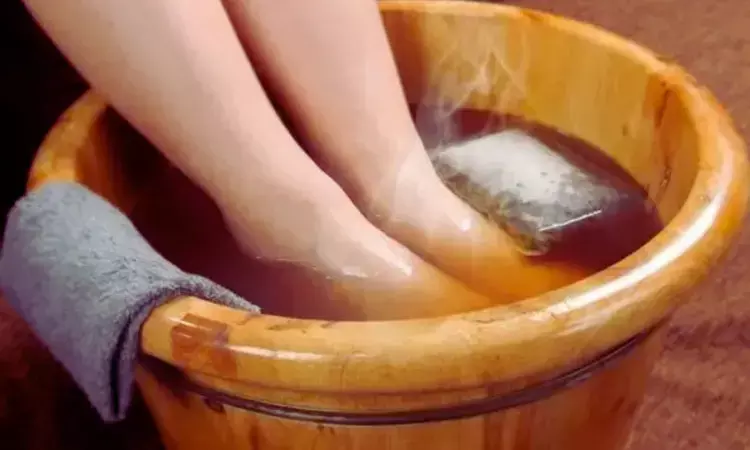- Home
- Medical news & Guidelines
- Anesthesiology
- Cardiology and CTVS
- Critical Care
- Dentistry
- Dermatology
- Diabetes and Endocrinology
- ENT
- Gastroenterology
- Medicine
- Nephrology
- Neurology
- Obstretics-Gynaecology
- Oncology
- Ophthalmology
- Orthopaedics
- Pediatrics-Neonatology
- Psychiatry
- Pulmonology
- Radiology
- Surgery
- Urology
- Laboratory Medicine
- Diet
- Nursing
- Paramedical
- Physiotherapy
- Health news
- Fact Check
- Bone Health Fact Check
- Brain Health Fact Check
- Cancer Related Fact Check
- Child Care Fact Check
- Dental and oral health fact check
- Diabetes and metabolic health fact check
- Diet and Nutrition Fact Check
- Eye and ENT Care Fact Check
- Fitness fact check
- Gut health fact check
- Heart health fact check
- Kidney health fact check
- Medical education fact check
- Men's health fact check
- Respiratory fact check
- Skin and hair care fact check
- Vaccine and Immunization fact check
- Women's health fact check
- AYUSH
- State News
- Andaman and Nicobar Islands
- Andhra Pradesh
- Arunachal Pradesh
- Assam
- Bihar
- Chandigarh
- Chattisgarh
- Dadra and Nagar Haveli
- Daman and Diu
- Delhi
- Goa
- Gujarat
- Haryana
- Himachal Pradesh
- Jammu & Kashmir
- Jharkhand
- Karnataka
- Kerala
- Ladakh
- Lakshadweep
- Madhya Pradesh
- Maharashtra
- Manipur
- Meghalaya
- Mizoram
- Nagaland
- Odisha
- Puducherry
- Punjab
- Rajasthan
- Sikkim
- Tamil Nadu
- Telangana
- Tripura
- Uttar Pradesh
- Uttrakhand
- West Bengal
- Medical Education
- Industry
Chinese Herbal Foot-Baths Show Promise for Early-Stage Diabetic Foot Care: Study

China: A new study, published in Frontiers in Pharmacology, has found that Chinese herbal foot baths may improve symptoms, vascular function, and nerve health in diabetic foot patients with Wagner grades 0 or 1, without increasing the risk of adverse events. Seven key herbs identified through data mining offer formulation guidance, though further clinical and pharmacological validation is needed.
The meta-analysis, led by R. Lin and colleagues from the School of Traditional Chinese Medicine at Hunan University of Chinese Medicine, assessed whether herbal foot-baths could be beneficial for patients with early-stage diabetic foot. The team systematically reviewed 13 clinical studies, including 921 participants, and performed both meta-analysis and data mining to evaluate efficacy and identify the most frequently used herbs in these formulations.
The study revealed the following findings:
- Chinese herbal foot-baths were associated with a significantly higher clinical effectiveness rate compared to warm water foot soaks (RR 1.42).
- The ankle-brachial index showed a mean increase of 0.19, indicating improved vascular health.
- Motor nerve conduction velocity of the common peroneal nerve improved significantly (MD 4.09).
- Sensory nerve conduction velocity of the common peroneal nerve also showed significant improvement (MD 3.83).
- Glycosylated hemoglobin (HbA1c) levels demonstrated a modest but statistically significant reduction (MD -0.15).
- Fasting blood glucose levels were significantly reduced (MD -0.28).
- No significant differences were observed in postprandial glucose, total cholesterol, triglycerides, or adverse events, indicating the therapy is relatively safe but does not directly affect lipid metabolism or post-meal glucose levels.
To understand which herbal combinations might be driving these effects, the researchers conducted a data mining analysis of all included studies. Seven herbs emerged as core ingredients in effective formulations: Cinnamomum cassia Presl, Conioselinum anthriscoides (‘Chuanxiong’), Paeonia lactiflora Pall., Angelica sinensis (Oliv.) Diels, Prunus persica (L.) Batsch, Carthamus tinctorius L., and Asarum heterotropoides F. Schmidt. These botanicals, traditionally used in Chinese medicine to promote blood circulation and alleviate neuropathy, may provide a pharmacological basis for the observed benefits.
Importantly, the study highlighted that while the current evidence supports potential advantages of herbal foot-baths in early-stage diabetic foot management, limitations remain. Most included trials were small in size and varied in methodology, underscoring the need for larger, high-quality randomized controlled studies. Furthermore, the pharmacodynamics of the identified herbal combinations have yet to be fully explored in laboratory and clinical settings.
The findings suggest that integrating Chinese herbal foot-baths with conventional diabetic foot care could offer an adjunctive approach for patients with Wagner grade 0 or 1 lesions. By potentially improving circulation, nerve function, and glycemic control without adding adverse effects, this traditional therapy may complement modern treatment strategies. However, experts caution that the evidence, while promising, should be interpreted carefully until further robust studies confirm these outcomes and clarify optimal formulations and treatment protocols.
Reference:
Lin, Ruifang, et al. "Chinese Herbal Foot Baths as a New Strategy for Diabetic Foot With Wagner Grade of 0 or 1: a Meta-analysis and Data Mining." Frontiers in Pharmacology, vol. 16, 2025, p. 1594386.
Dr Kamal Kant Kohli-MBBS, DTCD- a chest specialist with more than 30 years of practice and a flair for writing clinical articles, Dr Kamal Kant Kohli joined Medical Dialogues as a Chief Editor of Medical News. Besides writing articles, as an editor, he proofreads and verifies all the medical content published on Medical Dialogues including those coming from journals, studies,medical conferences,guidelines etc. Email: drkohli@medicaldialogues.in. Contact no. 011-43720751


